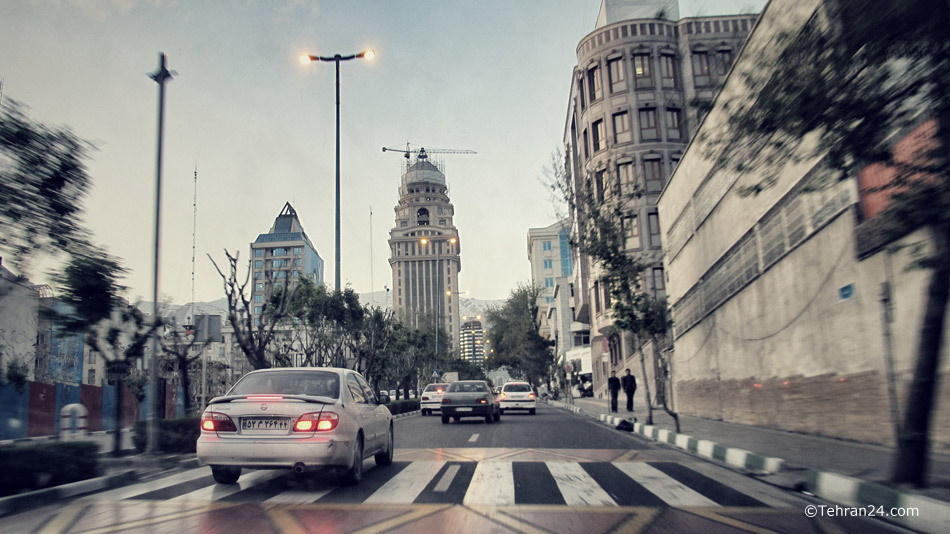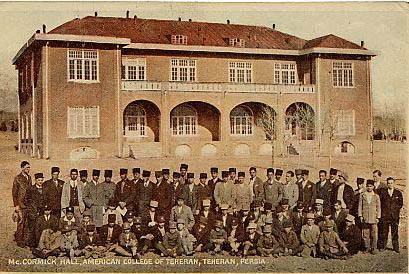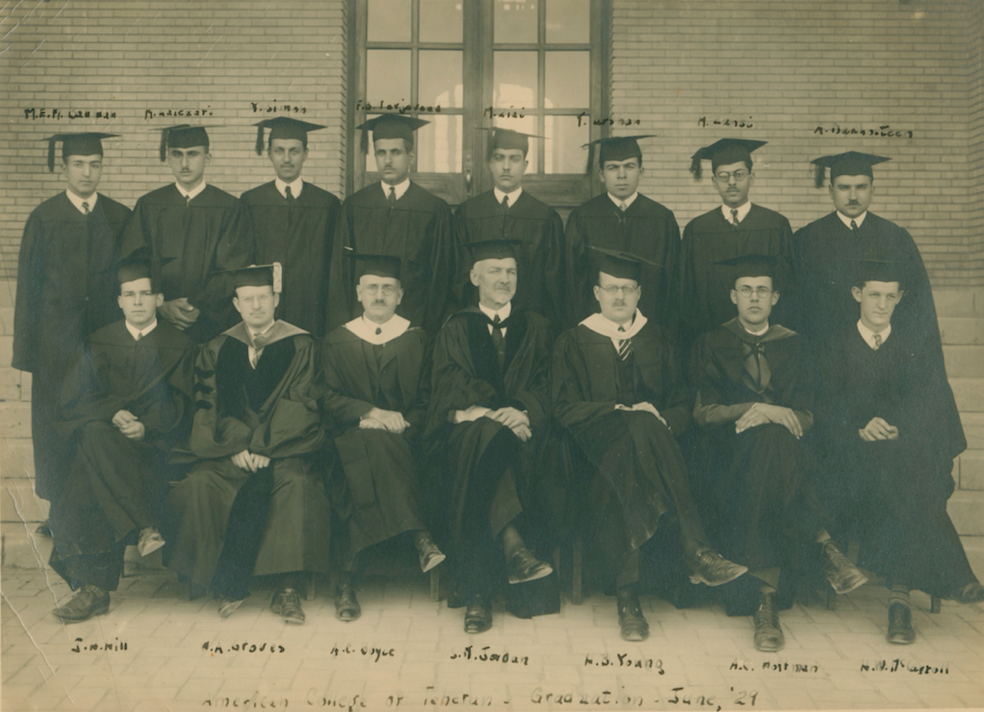For residents of Tehran, the name “Jordan” conjures up images of luxury apartment towers, expensive brand names, and twenty-somethings in fancy cars who spend their afternoons driving around aimlessly flirting with each other. Jordan Street is one of the Iranian capital’s most famous thoroughfares, and even though it has been replaced by more expensive streets further uptown since its heyday in the early 2000s, the name remains synonymous with luxury culture and excessive spending in Iran.
Depending on who you ask, Jordan is either a sign of elite Iranian culture’s descent into the lowest depths of Western consumerism or a shining example of how capitalist excess can flourish anywhere, even under a government whose claim to fame is opposing US imperialism worldwide. Even though the street was officially renamed “Africa” after the Iranian Revolution and then later “Nelson Mandela,” which is its official name today, it is still widely referred to simply as “Jordan.”

Few people, however, realize where the name comes from. Jordan does not refer to the kingdom south of Syria – in Persian, as in Arabic, that country is called “Ordon”. Jordan Street is actually named after Samuel M. Jordan, an American missionary who was the head of one of Iran’s most famous schools in the early 20th century. He taught at the American College of Tehran, later renamed Alborz. A pioneer of modern education in Iran, Jordan’s legacy has been largely forgotten.
Jordan Street stands as a solitary reminder today of an era in Iranian history when America was considered a force for good, long before the CIA helped overthrow Iran’s democratically-elected Prime Minister in 1953 and then squandered any remaining goodwill it had through its support for the Shah until his overthrow in 1979.

Born in Pennsylvania in 1871, Jordan moved to Iran as a presbyterian missionary in 1898. At the time, Iran’s Qajar dynasty was just beginning to build a system of modern education. Both the British and Russian empires were battling for control over Iran in the hope of instituting colonial rule. In this context, Iranians saw Americans as a force for good, as they generally respected Iranian sovereignty and laws, had no imperial designs on the country, and they even opposed British and Russian infiltration.
Since the early 1800s, American missionaries had been setting up Christian schools in Iran – initially to administer to local Armenian and Assyrian Christians, and later more generally – under the condition that they not try to convert Muslims.
Jordan was appointed head of a boys’ school in central Tehran. He built this school over the years into the American College of Tehran, one of the most esteemed institutes of modern education in the country. It is famous today by its later name, Alborz, and part of the campus later became Amir Kabir University, still one of Iran’s most important institutions of higher educations.
Jordan sought to educate Iran’s leading intellectuals, an aim he achieved through fundraising efforts in the US that amassed hundreds of thousands of dollars to expand the college and take in more students.

The school educated many of Iran’s top thinkers in the years to come. These include Ali Asghar Hekmat, who became Minister of Education in the 1930s and helped establish the University of Tehran, before going on to be Foreign Minister later in life. Another graduate was Abol Qasem Bakhtiar, who later became dean of Tehran University’s medical school.
Although Jordan was a missionary, his philosophy was less attempting to convert his students than it was to lead by example, and to this end he participated in relief efforts during the 1917-8 famine and encouraged students to contribute to Iranian society however possible. He also introduced physical education into Iranian schools, and even helped establish Boy Scouts.
Jordan’s wife Mary Wood Park also took an active part in the school’s work, teaching English and working with the Ministry of Education to build an English curriculum for their schools. She advocated for women’s education, and disagreed with Reza Shah’s efforts to ban the veil by force, noting that it was not an obstacle to education.

By the 1930s, Iran’s educational system had expanded and come under the close control of the central government as a result of Reza Shah’s centralizing reforms. In 1932, a law was passed demanding all schools take Iranian names – and thus the American College became Alborz College of Tehran, a reference to the view of the Alborz mountains from the campus.
Jordan and his wife continued teaching there until he retired in 1941. During this time, Iran’s educational system grew and improved to the extent that missionary schools were replaced by local public schools.
Besides his role in the education system, one of the most enduring parts of Jordan’s legacy was the image of the US he provided for his students. As Michael Zirinsky notes, “In part because of the picture of America that he conveyed to his students by actions and words, Iran turned toward America during World War II as a counter to British and Russian imperial aspirations.”

His efforts, however, would be stymied by the United States’ actions in the years following his death. America’s image as a friend of the Iranian people was obliterated in the 1950s when the CIA helped undertake a coup that overthrew the democratically-elected government of Mohammed Mossadeq and returned the Shah to power. From then until 1979, the US backed the authoritarian government of Mohammad Reza Shah. This fact made the US a target of public anger when Iran’s popular revolution finally ousted him from power.
After the revolution, Jordan Street was renamed “Africa Street” as part of the government’s attempts to reshape Tehran’s geography to reflect its Third Worldist orientation. Jordan fell victim to the renaming efforts alongside other Western names like Elizabeth and Roosevelt as well as names associated with the monarchy. Eventually, Africa Street was officially renamed to Nelson Mandela Street, which it retains today.
Unlike other renamed streets, however, “Jordan” is still widely known by the pre-Revolutionary name, though many are largely unaware of the connection. It is a reminder of an earlier time in Iran’s history, when the US was seen as a potential force for good in the lives of Iranians, long before CIA involvement in the 1953 coup and US support for the Shah dashed Iranians’ hopes.

Sources:












4 comments
Wow! Great article! Very interesting and informative and pleasurable to read. I also didn’t know the history behind this street. I used one of your articles as a source for my latest university paper on gender segregation in the islamic republic of Iran and it really helped me out. Bravo!